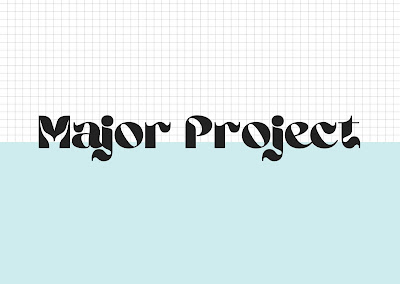Creative Brand Strategy: Task #2— Ideation & Design Direction
26.04.2022 - 03.05.2022 (Week #5 - Week #6)
Seerat Tayyab Mukhtar Qureshi - 0345576 (BDCM)
Creative Brand Strategy
Task #2— Ideation & Design Direction
1. Lectures:
Task #1
2. Instructions:
Module Information Booklet
3. Ideation and Design Direction
For this task, we need to start working on a more detailed plan for our campaign. I started by putting my ideas and mood board into slides.
Fig 1.0: Slides progress
After feedback from Ms Li Lian, I had to work through a few of the elements. I also decided to change my campaign name to "What Makes Us Human." Since Ms Li Lian told me Leave It In The Past was a bit too long and I think What Makes Us Human is a lot more catchy and interesting as well.
CBS - Task #2 by Seerat QureshiFig 1.1: Final Submission
4. Feedback:
Week #5: This week I showed Ms Li Lian my progress slides and she gave me some feedback on my previous submission. She mentioned my task 1B was good but my campaign name might be a bit too long. I can try and think of some more ideas before submitting task #2.
For task #2 she mentioned that I should work a bit more on how many posters and series I want to do. Since we have some time I should try not to limit myself. For my Instagram infographic post, I should also be careful not to make it the main focus of my campaign and the physical posters are just as important and essential to my campaign. For the merchandise, I don't need to worry too much about it since once I have my design for other things done it will come naturally.
For the design direction, I need to work a bit more on my choice of imagery and graphic elements. They need to blend together with my message a bit better. I should also try typesetting my fonts and maybe make Apple Garamond my body text since it works well. My colour palette can also be worked on once I start designing. I can also start working on my logo and just brainstorming some ideas for it.
5. Reflection:
Experience: This campaign is definitely going to be an interesting experience. I really enjoyed researching the visuals and application ideas. Additionally, I'm really interested in activism based graphic design and so I am really glad we got to pick a campaign of our choice to execute. It made the process of researching and compiling a lot more intriguing and stimulating. Overall, it is nice to see the campaign slowly build up and take shape.
Observation: I observed that the more I developed my campaign, the more it changed from its original form in Task #1. This is very important because it shows that my ideas are developing with the more knowledge I gain and it's not stagnant. I observed it's essential to not be stubborn in our original ideas and if we see the potential for a more successful and viable idea, it is definitely worth exploring.
Findings: I found myself really carefully picking out what I wanted my campaign to look like. The more I pondered on my idea, the more I felt like changing the tone of the campaign a little. I liked that we were given the freedom to develop our campaigns naturally and that nothing is set in stone so we can keep learning and finding more ideas and strategies for our campaign.
6. Further reading:
This week I decided to read an article about war and its consequences. This is a really famous article about Hiroshima and a great example of narrative journalism. It was quite long and it follows the journey of six survivors.
The bombing of Hiroshima and Nagasaki was a pivotal moment for all of humanity and reading this article inspired me to change the tone of my campaign a little. Reading the stories of the survivors I realised it is quite important for the campaign to be not just strictly anti-war but more humanised and peace based as well. It is very important to understand just how drastically damaging war can be in order to execute a successful and most importantly a meaningful campaign.
It is similar to how brands execute campaigns, they do extensive research first and understand the content they are going to be putting out. It increases the chances of them being successful and more impactful to people.
What this article does really well in my opinion is how it mentions mundane details of the six survivors and which emphasises that those people were so much more than statistics. This is another thing that affected my original campaign plan. It was supposed to be quite a statistic based but now it should be more human-based hence the name.
Overall, I think I can learn a lot from this article for my campaign. The way it appeals to our emotional side is perhaps what makes it such a profound and successful piece and I want my campaign to do just that as well.
.png)



Comments
Post a Comment